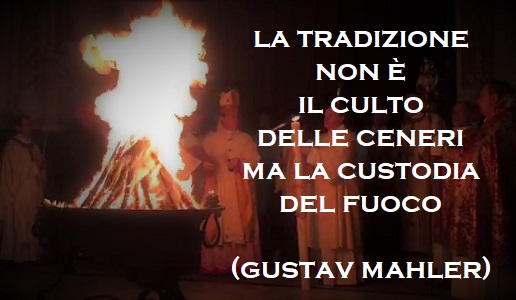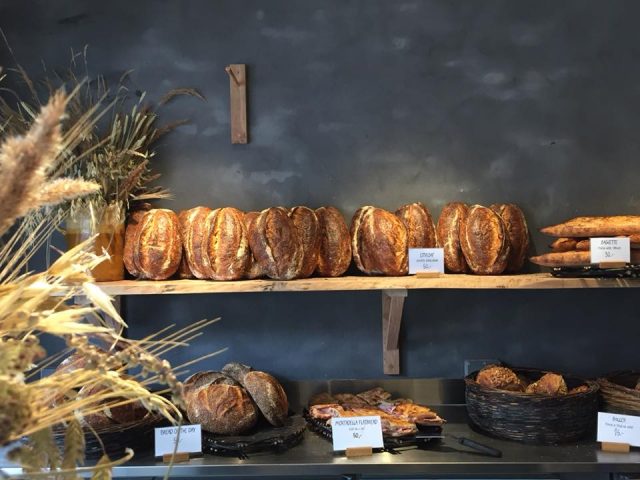Escaping to the past: cult or preservation

We cannot dismiss progress made through scientific research, which is aimed at improvement, in the name of an inflexible vision of the “great” Italian wines.
Some time ago, during a wine tour, I came across a wonderful quote from Gustav Mahler: “Tradition is not the cult of the ashes but the preservation of the fire”. I liked it a lot for the way it presented a concept dear to those interested in science.
More and more, I have encountered a disturbing immobilism in the world of wine on the part of many leading sector figures. During the recent lockdown, I posted a question on a social media site I came across that had reviews by some excellent tasters on wines that were at least 15 years old. The crux of my intervention was this: many of the wines tasted, despite coming from very different areas and made with different varietals, were judged in regard to aromas using the same yardstick and the flavor descriptions were the not that different even though they were wines of absolute were wines of absolute quality.
The concepts I put up for discussion were the following: Is the standardization of interpretations of aromas detrimental for Italian wines at important auctions frequented by the so-called big spenders? Can technological advances and a greater knowledge on the volatile substances found in Italian varietals result in an improvement of the situation in the near future? If this is the case, how can the parameters be changed in evaluating wines and certain aromas considered “traditional” but that are nothing more than traits from premature oxidation? By applying new technology can we extend the aromatic life of a wine maintaining the traits of the varietal and territory? If so, should we change our approach to tasting a wine in view of these discoveries? While the questions are many, perhaps too many, and few have been discussed at length, nevertheless, the concepts behind them are interesting.
Many of the responses betrayed fears that may have had noble intents but were fears just the same, while others remarked how there was a problem of information in regard to old wines. Then there were those who climbed onto a pulpit and proclaimed that it was difficult to comprehend an old wine and that too few were tasted and so very few people could really appreciate their complexity. But one needs only carry out some simple lab experiments to see that many old wines have fewer aromatic components than those of younger wines, thus it is difficult to talk about complexity if there are fewer elements.
The interventions dealing with the problem of communication when it comes to old wines were very interesting and basically underscored how there has not been sufficient codification to explain their aromas, be it because they are fewer of these wines, be it because we get lost in the “refinedness” of aromas which is difficult to explain and so one resorts to descriptions that are more common and this makes them seem less complex. This reasoning is in contrast with science and deals more with the personal emotions and sensations that these wines provoke in the taster. For many, this fear of losing the emotional aspect means that the classic tasting approach is inadequate and wrong when it comes to older wines. But when a wine loses its aromatic and thus territorial identity, can it still be evaluated positively? And so shouldn’t we seek to somehow extend its aromatic and territorial identity?
Another fear expressed by many of my colleagues was that of sacrificing some of the great Italian wines in the name of a future vision that is still unclear. And this is where we find ourselves faces with the cult of the ashes in which a wine should be preserved like a 1923 Bugatti, revolutionary in its day, or the Messerschmitt Me 262, the first jet-powered fighter plane that was legendary then as it is now. However, certain Italian wine icons had nothing to do with tradition when they came out.
The question thus arises of how many iconic Italian wines are there that were made with native varietals and have a great tradition behind them? And how many created a style that they have maintained unchanged over the years? Can we be sure that nothing has changed in them? Daniele Cernilli, the only person after the death of Luigi Veronelli who maintains an historic memory of Italian winemaking, named five basic ones for me: Barolo Monfortino Conterno, Brunello Riserva Greppo Biondi Santi, Taurasi Riserva Mastroberardino, Trebbiano and Montepulciano d’Abruzzo Valentini and Amarone Quintarelli. When they came out they their first vintages were innovative but they never stayed the exactly same over the years, adopting important changes in detail. For example: after vintage 1995, Biondi Santi made changes but without altering its style; while the aromas of Valentini wines have become more precise since Edoardo’s son Francesco has been in charge of the winery.
Thus there is no danger of losing a stylistic past in the world of wine and fear should not immobilize a sector at the expense of knowledge and research that will project Italian wines into a future where they will be different but still connected with their territory. Nor can we dismiss progress made through scientific research aimed at improving a wine. France has two very important centers for applied research, Bordeaux and Dijon, which have for years limited certain and I dare say exhausted aspects after the ‘Parker revolution’. Italy has more for both winemaking and wine growing and this has resulted, for example, in the creation of Sangiovese wines based on research done for the Chianti Classico 2000 project.
One must have the courage to explore new venues which are not a leap in the dark because there are producers who are already working in this direction with excellent results in some cases and encouraging ones in others. Some of these pioneers now have older wines made with these new ideas which are looked upon with skepticism by some and adored by many. In the not too distant future we will be able to make a vintage comparison between wines of the two schools of winemaking and be able to, hopefully, evaluate their differences unconditionally.

 Italiano
Italiano








